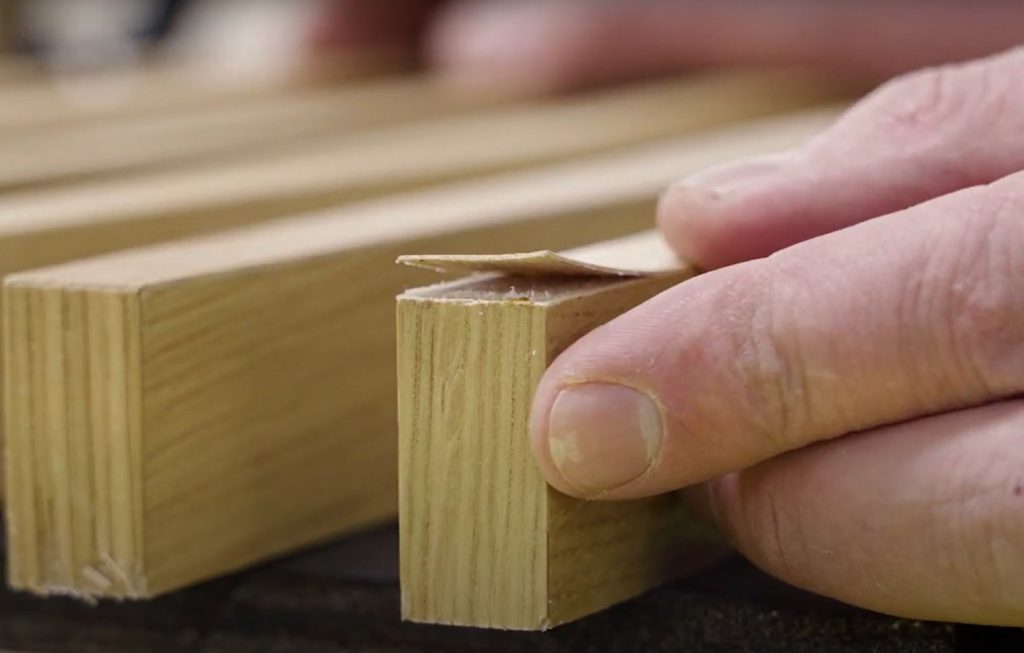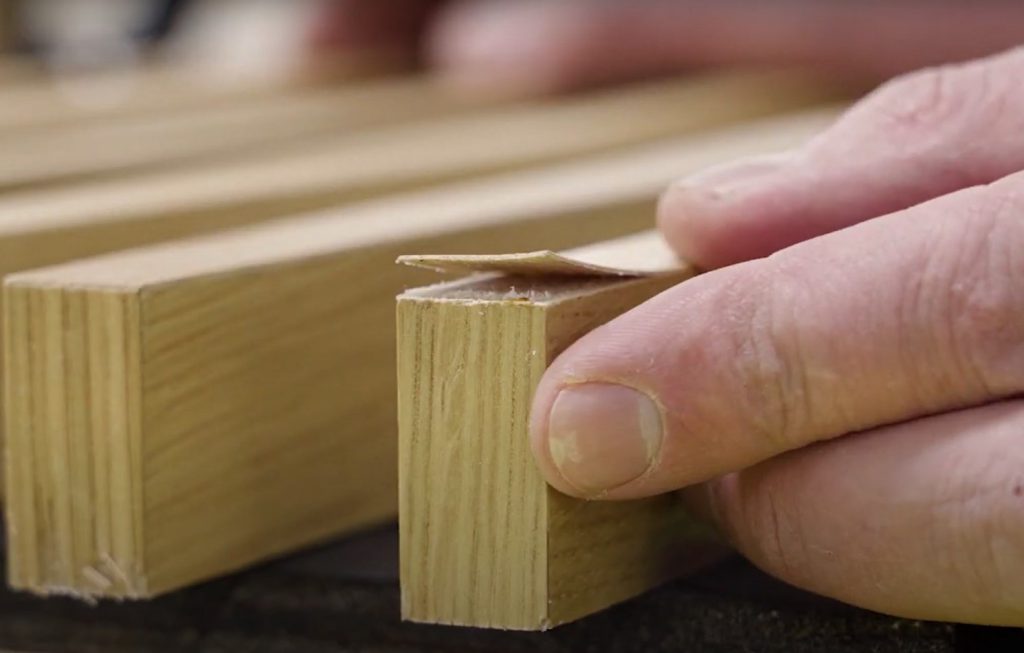Can delaminated plywood be repaired? If you’ve ever wondered about fixing that damaged plywood, you’re in the right place! Whether it’s for a school project or a home improvement task, we’ve got you covered. In this article, we’ll explore the world of delaminated plywood and discover whether it can be restored. So, let’s dive in and find out more!
Delaminated plywood occurs when the layers of wood separate, causing bubbles or gaps in the material. But don’t worry, repairing it is often possible! In the upcoming paragraphs, we’ll explore various methods to restore delaminated plywood and bring it back to its former glory. From using glue and clamps to applying heat and pressure, you’ll find a range of techniques to try.
Say goodbye to that unsightly delamination and hello to a sturdy plywood surface once again! In the next section, we’ll dive into the step-by-step process of repairing delaminated plywood. So, grab your tools and get ready to tackle this project head-on. With a little effort and some helpful tips, you’ll have your plywood looking good as new in no time! Let’s get started!

Can Delaminated Plywood be Repaired?
Plywood is a versatile and commonly used material in construction and woodworking. However, over time, plywood can develop issues such as delamination, where the layers of the plywood separate. This can be a frustrating problem for anyone working with plywood, but the good news is that in many cases, delaminated plywood can be repaired. In this article, we will explore the causes of delamination, the repair methods available, and tips for preventing delamination in the future.
Understanding Delamination
Delamination occurs when the adhesive between the layers of plywood fails, causing the layers to separate. This can be caused by a variety of factors, including exposure to moisture, excessive heat, poor quality adhesive, or incorrect application of the adhesive during the manufacturing process. Delamination not only compromises the structural integrity of the plywood but also affects its appearance and performance.
To assess whether delaminated plywood can be repaired, it is important to consider the extent of the damage. In some cases, the delamination may be limited to a small area, making it easier to repair. However, if the delamination is widespread or severe, it may be more cost-effective to replace the plywood altogether.
Repairing Delaminated Plywood
If the delamination of the plywood is limited and the structural integrity of the material is still intact, repairs can be attempted. Here are three common methods for repairing delaminated plywood:
1. Injection Method: This method involves injecting epoxy or polyurethane adhesive into the delaminated areas using a syringe or a specialized injection kit. The adhesive fills the gaps and bonds the layers back together. Clamps or weights are then applied to the repaired area to ensure a tight bond.
2. Moisture Method: In some cases, delamination can be caused by moisture. By identifying and eliminating the source of moisture, the delaminated plywood may naturally re-adhere as it dries. This method is best suited for minor delamination issues caused by temporary exposure to moisture.
3. Veneer Replacement Method: If the delamination is severe or widespread, it may be necessary to replace the affected plywood veneers. This involves carefully removing the delaminated layers and replacing them with new ones. The new veneers are glued and clamped in place until the adhesive cures, creating a strong bond.
It is worth noting that the success of these repair methods depends on the extent of the delamination, the quality of the adhesive used, and the skills of the person performing the repairs. In some cases, seeking professional help may be necessary to ensure a proper repair.
Tips for Preventing Delamination
Prevention is always better than a cure, especially when it comes to delamination. Here are some tips to help prevent delamination of plywood:
1. Choose High-Quality Plywood: Opt for plywood that is specifically designed for the intended use, ensuring it meets the necessary standards and has undergone proper manufacturing processes. High-quality plywood is less likely to delaminate.
2. Protect Plywood from Moisture: Ensure that plywood is properly sealed and protected from excessive moisture. Avoid prolonged exposure to water and take measures to prevent moisture infiltration, such as using appropriate sealants and coatings.
3. Store Plywood Correctly: Plywood should be stored in a dry, flat, and well-ventilated area to prevent moisture buildup. Avoid storing plywood in areas prone to extreme temperature fluctuations or high humidity.
4. Use the Correct Adhesive: When working with plywood, ensure that you are using the correct adhesive for the intended application. Follow the manufacturer’s instructions for application and curing times to maximize the adhesive’s effectiveness.
5. Handle Plywood with Care: Avoid dropping or mishandling plywood, as this can cause damage to the layers and increase the risk of delamination. Use proper lifting and handling techniques to minimize the stress on the plywood.
In conclusion, delaminated plywood can often be repaired depending on the extent of the damage. Methods such as injection, moisture treatment, and veneer replacement can help restore the plywood’s structural integrity. However, prevention is key, and by choosing high-quality plywood, protecting it from moisture, storing it correctly, using the right adhesive, and handling it with care, you can reduce the risk of delamination and prolong the lifespan of your plywood projects.
“Can Delaminated Plywood be Repaired?” – Key Takeaways
- Delaminated plywood can be repaired with proper techniques and tools.
- Start by removing the loose or damaged layers of plywood.
- Apply wood glue to the affected areas and clamp them together.
- Sand down the repaired surface to create a smooth finish.
- Finally, seal or paint the repaired plywood to protect it from future damage.
Frequently Asked Questions
Welcome to our FAQ section regarding the repair of delaminated plywood. Here, we’ll answer some common questions about the process and feasibility of repairing delaminated plywood.
1. What is delaminated plywood?
Delaminated plywood refers to plywood that has layers coming apart or peeling away from one another. This can occur due to moisture exposure, improper storage, or aging.
When plywood delaminates, it loses its structural integrity and may become weak and unstable. It is important to address delamination early on to avoid further damage to the plywood and any structures it supports.
2. Can delaminated plywood be repaired?
Yes, delaminated plywood can be repaired. The repair process involves removing the delaminated layers, cleaning the surface, and then re-bonding new layers of plywood using an appropriate adhesive.
However, it’s crucial to assess the extent of the damage and determine if repair is a viable option. If the delamination is extensive or the plywood is severely weakened, it may be more cost-effective and safer to replace the entire piece of plywood.
3. What are the steps to repair delaminated plywood?
The steps to repair delaminated plywood involve:
1. Assess the damage: Examine the plywood to determine the extent of delamination and identify any underlying causes.
2. Remove delaminated layers: Carefully remove the affected layers using a chisel or scraper, ensuring that only the delaminated portions are removed.
3. Clean the surface: Remove any loose debris or adhesive residue, and sand the surface to promote better adhesion.
4. Apply adhesive: Apply a suitable wood adhesive to the cleaned surface and new plywood layers to bond them together.
5. Press and clamp: Use clamps or weights to apply pressure to the repaired area and allow the adhesive to dry completely.
6. Sand and finish: Sand the repaired area smooth, and apply a finish or sealant to protect the plywood from further damage.
4. What type of adhesive is best for repairing delaminated plywood?
The type of adhesive that is best for repairing delaminated plywood depends on several factors, including the extent of delamination and the intended use of the plywood.
A common and effective adhesive for plywood repair is a two-part epoxy. This adhesive provides strength, durability, and moisture resistance. It’s important to follow the manufacturer’s instructions and choose an adhesive suitable for woodworking applications.
5. Can I prevent plywood from delaminating in the future?
While delamination can occur due to various factors, there are steps you can take to minimize the risk:
1. Proper storage: Store plywood in a dry, temperature-controlled area to prevent moisture damage.
2. Avoid prolonged exposure to water: Avoid leaving plywood exposed to water for extended periods, as this can lead to delamination.
3. Seal the edges: Applying a waterproof sealant to the edges of plywood can help prevent moisture penetration and subsequent delamination.
4. Regular maintenance: Inspect your plywood regularly for signs of delamination or damage, and address any issues promptly.
By following these preventive measures, you can help extend the lifespan of your plywood and reduce the chances of delamination.

Summary:
Plywood can be repaired if it is delaminated, or the layers have come apart. The process involves cleaning the area, applying glue, and clamping the layers together until they dry. It’s important to use the correct type of glue and follow the manufacturer’s instructions for best results.
However, if the delamination is severe or extensive, it might be better to replace the plywood altogether. Regular maintenance and proper handling can help prevent delamination in the future. Remember, safety is key, so always wear protective equipment and consult an adult when working with tools and materials.
